Sensor Sweep: Twilight Zone, Solomon Kane, Cosmic Horror
Monday , 30, October 2023 Sensor Sweep Leave a commentT.V. (Art of Manliness): If you have only passing familiarity with The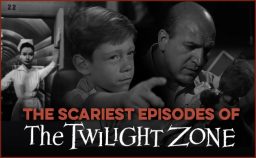 Twilight Zone — maybe only really knowing its iconic opening sequence — you might be forgiven for thinking that the classic television show centered on scary themes. In reality, however, while the show certainly had a dark atmosphere and included plenty of suspense, creepiness, and dread, it fell more into the genres of science fiction and fantasy than horror.
Twilight Zone — maybe only really knowing its iconic opening sequence — you might be forgiven for thinking that the classic television show centered on scary themes. In reality, however, while the show certainly had a dark atmosphere and included plenty of suspense, creepiness, and dread, it fell more into the genres of science fiction and fantasy than horror.
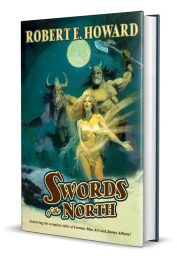 Robert E. Howard (REH World): Swords of the North – the Ultimate Edition – Coming soon!
Robert E. Howard (REH World): Swords of the North – the Ultimate Edition – Coming soon!
The definitive collection of Robert E. Howard’s Celtic/Viking adventure stories. The book checks in at around 500 pages, and will be printed in hardback with dust jacket. Edited by Rob Roehm and Paul Herman. Cover art by Mark Wheatley and introduction by Rusty Burke.
Fiction (E.F. Benson the Other Novels): The purpose of this blog is to review,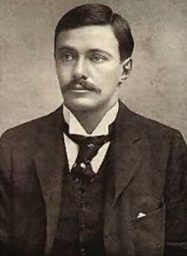 and to gather together other critics’ opinions of, the entire works of E F Benson. ‘Fred’ is known today almost exclusively for his Mapp and Lucia novels and his ghost (‘spook’) stories, but in his day he was a popular and versatile author, whose career of almost 50 years saw him tackle a wide range of subjects in both fiction and non-fiction.
and to gather together other critics’ opinions of, the entire works of E F Benson. ‘Fred’ is known today almost exclusively for his Mapp and Lucia novels and his ghost (‘spook’) stories, but in his day he was a popular and versatile author, whose career of almost 50 years saw him tackle a wide range of subjects in both fiction and non-fiction.
D&D (D M David): When D&D creators Dave Arneson and Gary Gygax adopted the word race for the playable species in D&D, they used the term in the same sense as the human race. More commonly, “race” refers to human groups who share superficial traits common to their ancestry, and that use recalls a long history of people using ancestry and appearance to justify mistreating and exploiting people. The choice of the word “race” weighed the game with problems that lasted until today. And D&D’s issues with race go beyond the baggage that weighs on the word.
Horror (Dark Worlds Quarterly): In Richard Dalby’s Dracula’s Brood, Rare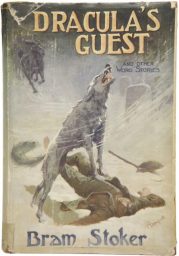 Vampire Stories by Friends and Contemporaries of Bram Stoker (1987) he lists the nine stories that are so familiar, because they have anthologized so many times before, that he chooses to pass on them. I could have suggested a few others but over-all I think he pegs it pretty well. You might have an idea which he chose: their are countless classics from the pages of Weird Tales and Strange Tales.
Vampire Stories by Friends and Contemporaries of Bram Stoker (1987) he lists the nine stories that are so familiar, because they have anthologized so many times before, that he chooses to pass on them. I could have suggested a few others but over-all I think he pegs it pretty well. You might have an idea which he chose: their are countless classics from the pages of Weird Tales and Strange Tales.
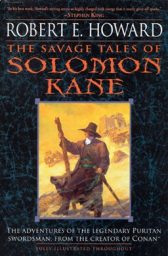 Robert E. Howard (Black Gate): Solomon Kane. I can still remember when I first read the name. I was 11 and looking through books and comics at a flea market, my mother one row over looking through the Robin Cook section. I pulled a slim paperback from the pile, the cover showing a cold eyed Puritan staring at me with open condemnation (at least that’s how I interpreted the visual). But then I read the name… SOLOMON KANE. And there wasn’t a prayer on Earth of getting me to let go of this book that day.
Robert E. Howard (Black Gate): Solomon Kane. I can still remember when I first read the name. I was 11 and looking through books and comics at a flea market, my mother one row over looking through the Robin Cook section. I pulled a slim paperback from the pile, the cover showing a cold eyed Puritan staring at me with open condemnation (at least that’s how I interpreted the visual). But then I read the name… SOLOMON KANE. And there wasn’t a prayer on Earth of getting me to let go of this book that day.
Pulp Science Fiction (Sprague de Camp Fan): Manly Wade Wellman did not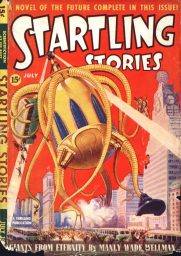 like L. Sprague de Camp for a good long while. He eventually changed his mind but not before he wrote Giants From Eternity and featured a thinly disguised Sprague de Camp (hiding under the name of Spencer DuPogue) as the villain in this science-fiction novel published in the July 1939 issue of Startling Stories.
like L. Sprague de Camp for a good long while. He eventually changed his mind but not before he wrote Giants From Eternity and featured a thinly disguised Sprague de Camp (hiding under the name of Spencer DuPogue) as the villain in this science-fiction novel published in the July 1939 issue of Startling Stories.
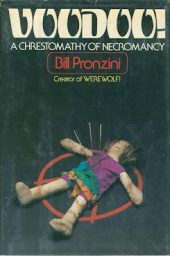 Horror (Paperback Warrior): This collection is presented in three parts. Part 1: Traditional Voodoo features stories by Cornell Woolrich, W.B. Seabrook, Robert Bloch, Carl Jacobi, and Henry S. Whitehead. Part II is Voodoo Elsewhere and Otherwise, consisting of stories by Robert Louis Stevenson, John Russell, Edward Hoch, Mary Elizabeth Counselman, Bryce Walton, and Morris West. The final part is The “Ultimate” Voodoo, which is simply one tale by Henry Slesar.
Horror (Paperback Warrior): This collection is presented in three parts. Part 1: Traditional Voodoo features stories by Cornell Woolrich, W.B. Seabrook, Robert Bloch, Carl Jacobi, and Henry S. Whitehead. Part II is Voodoo Elsewhere and Otherwise, consisting of stories by Robert Louis Stevenson, John Russell, Edward Hoch, Mary Elizabeth Counselman, Bryce Walton, and Morris West. The final part is The “Ultimate” Voodoo, which is simply one tale by Henry Slesar.
Horror (Por Por Books): Squirm was a low-budget, drive-in horror movie from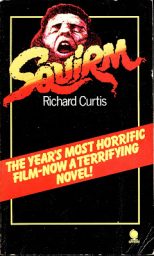 American International Pictures released in the U.S. in 1976. It revolved around a rather contrived sort of ‘monster’, namely, the humble marine worms that live in the sand and sediments of the seashore. These so-called ‘clam worms’ or ‘bloodworms’ are relatives of earthworms, and are (unlike earthworms) carnivorous. They are harvested in great numbers and used as bait for saltwater fishing; you can buy them live and store them in your refrigerator until you go fishing.
American International Pictures released in the U.S. in 1976. It revolved around a rather contrived sort of ‘monster’, namely, the humble marine worms that live in the sand and sediments of the seashore. These so-called ‘clam worms’ or ‘bloodworms’ are relatives of earthworms, and are (unlike earthworms) carnivorous. They are harvested in great numbers and used as bait for saltwater fishing; you can buy them live and store them in your refrigerator until you go fishing.
Weird Tales (Tellers of Weird Tales): The October 1923 issue of Weird Tales has fourteen stories, three features, and five uncredited non-fiction fillers. The features are “The Eyrie,” “The Cauldron,” and “Weird Crimes.” The cover story is the first part of a two-part serial called “The Amazing Adventure of Joe Scranton” by Effie W. Fifield. The cover art was by R.M. Mally and all of the interior illustrations by William F. Heitman. Firsts include the first stories in Weird Tales by Seabury Quinn, H.P. Lovecraft, and Frank Owen, also the first installment of the feature “Weird Crimes” by Quinn.
Tolkien (Tentaclii): Tolkien Gleanings #7 (October 2023). My seventh PDF ‘zine, offering a unified collection of my blog posts which track newer items of possible interest to fellow Tolkien scholars, academics, collectors and artists. This PDF ‘zine version is produced to make it easy to pop a ‘unified edition’ into your folder of research PDFs, thus making the information easily searchable via desktop software. #7 also has a gallery and a short scholarly note and essay.
RPG (Walker’s Retreat): Time to pull another rulebook off the shelf. This time, it’s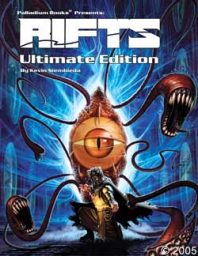 Palladium’s flagship: RIFTS. We’re going solo, but first we need to generate a man. That means Character Generation, and thus I flip through my book to pg. 279.
Palladium’s flagship: RIFTS. We’re going solo, but first we need to generate a man. That means Character Generation, and thus I flip through my book to pg. 279.
Writing (Kairos): Setting is the physical and temporal backdrop of your story. It encompasses the where and when, describing the environment, time period, and atmosphere in which your narrative unfolds.
Cinema (The Obelisk): Really good horror films are tough to come by. Especially coming out of Hollywood. Good cosmic horror, despite a recent increase in popularity, is even rarer. I get it. It’s really a niche subgenre and it’s not easy to conceptualize, let alone figure out how to show it visually. Cosmic horror can absolutely be disturbing and gruesome. But at its core, it’s about the cerebral elements. Not that there’s a murderer stalking your house or angry ghosts haunting your house.
Cinema (Bounding Into Comics): Star Wars creator George Lucas explained back in 2015 to Charlie Rose why Disney’s ownership and control of Star Wars was going to be so terrible. Lucas did an interview with Charlie Rose that was broadcast on December 25, 2015, but took place before the release of The Force Awakens.
to Charlie Rose why Disney’s ownership and control of Star Wars was going to be so terrible. Lucas did an interview with Charlie Rose that was broadcast on December 25, 2015, but took place before the release of The Force Awakens.
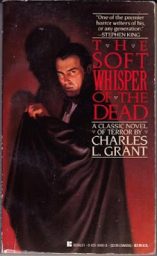 Horror (Rough Edges): I haven’t forgotten that Halloween is coming up and that I usually read at least a little horror fiction at this time of year. I’ve read a few novels by Charles L. Grant over the years and enjoyed them. He wrote mostly what some people call “quiet horror”, which is generally a little too slow-paced for my taste, so I’ve never considered him a favorite of mine.
Horror (Rough Edges): I haven’t forgotten that Halloween is coming up and that I usually read at least a little horror fiction at this time of year. I’ve read a few novels by Charles L. Grant over the years and enjoyed them. He wrote mostly what some people call “quiet horror”, which is generally a little too slow-paced for my taste, so I’ve never considered him a favorite of mine.
Pulp (Vintage Pop Fictions): The Polar Treasure was the fourth of the Doc Savage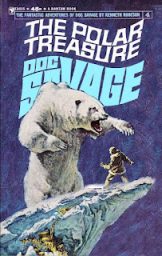 novels. It was published in 1933. It appeared under the house name Kenneth Robeson but was in fact written by Lester Dent.
novels. It was published in 1933. It appeared under the house name Kenneth Robeson but was in fact written by Lester Dent.
The Doc Savage novels were originally published in the pulp Doc Savage Magazine.
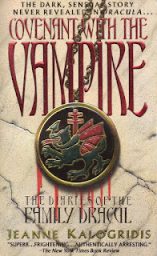 Horror (Chimney Sweep Reader): I’ve tended to shy away from vampire fiction in recent years although I am a huge fan of the original Dracula by Bram Stoker and stories that take place in a similar vein (no pun intended). In other words, I enjoy the historical fiction aspects of Dracula, vampire lore, etc. much more so than the blood/guts, sexual innuendo/love triangles etc. that seem so common today.
Horror (Chimney Sweep Reader): I’ve tended to shy away from vampire fiction in recent years although I am a huge fan of the original Dracula by Bram Stoker and stories that take place in a similar vein (no pun intended). In other words, I enjoy the historical fiction aspects of Dracula, vampire lore, etc. much more so than the blood/guts, sexual innuendo/love triangles etc. that seem so common today.
Fiction (Razored Zen): This is a collection of heroic fantasy short stories. Most of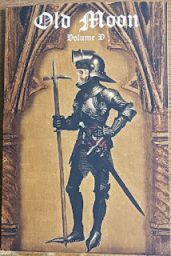 these tales would fall into the general Sword & Sorcery subgenre, but several of them stretch those boundaries to the breaking point. The Table of Contents consists of: Introduction, by the editors of Old Moon. An interesting comparison between “Kull” type heroic fantasy and “Conan” type.
these tales would fall into the general Sword & Sorcery subgenre, but several of them stretch those boundaries to the breaking point. The Table of Contents consists of: Introduction, by the editors of Old Moon. An interesting comparison between “Kull” type heroic fantasy and “Conan” type.
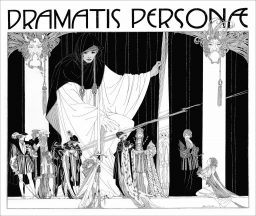 Art (DMR Books): Yesterday marked the seventy-fifth anniversary of the death of John Austen. Little-known today, Austen was one of the many English artists inspired by the ground-breaking work of Aubrey Beardsley in the 1890s. Along with contemporaries like Harry Clarke and R.S. Sherriffs, Austen created stylized art possessing a unique beauty and power.
Art (DMR Books): Yesterday marked the seventy-fifth anniversary of the death of John Austen. Little-known today, Austen was one of the many English artists inspired by the ground-breaking work of Aubrey Beardsley in the 1890s. Along with contemporaries like Harry Clarke and R.S. Sherriffs, Austen created stylized art possessing a unique beauty and power.
Please give us your valuable comment